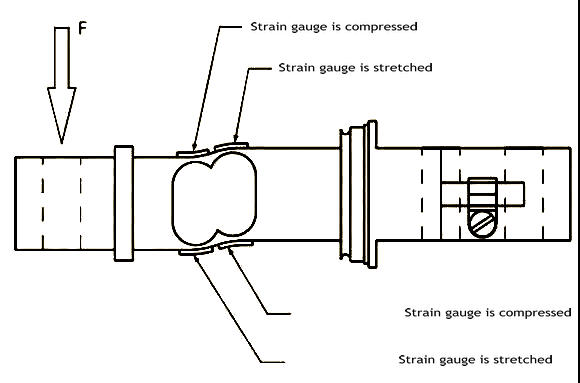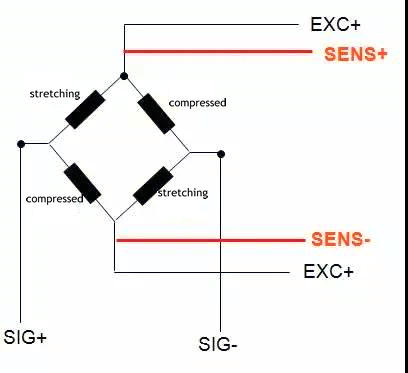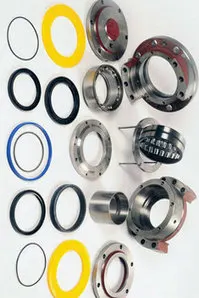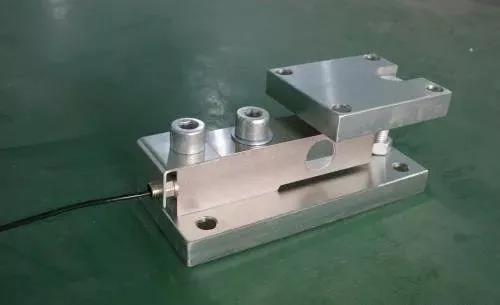Why can the load cell be weighed?
How to connect with PLC? How to use it to be the most accurate?
Weight is an important unit in life, so it is very important in industry. How many kilograms of raw materials are added in the production process? How many kilograms of waste products are produced, etc… These data are all necessary elements to support the good operation of the entire factory.
So how to calculate weight in industry? We need to use load cells!
The principle of the load cell is that the gravity on the measured object is converted into a measurable output signal in a certain proportion.
The measurement of the load cell adopts the principle of strain gauge, and the strain gauge is fixed on the elastic body. The action of external force causes the elastic body to deform, and the strain gauge on the elastic body deforms accordingly. As the external shape of the strain gauge changes, its resistance value will also change accordingly. The strain gauges in the upper left and lower right corners are compressed, the resistance film becomes shorter and the resistance value becomes smaller. The strain gauges in the upper right corner and the lower left corner are stretched, the resistance film becomes longer, and the resistance value becomes larger. For each load cell, at least 4 strain gauges are connected together to form a Wheatstone bridge. When the force of the sensor causes the resistance of the strain gauge to change, the bridge is unbalanced. In the case of constant excitation voltage, the size of the output signal is proportional to the force of the sensor.

The load cell can generally be connected to a PLC or a secondary meter for reading.
Common industrial sensors are divided into four-wire system and six-wire system;
For a four-wire sensor, there are only four cables shown in black in the figure below, where EXC+ and EXC- are the excitation of the weighing module to the sensor, and SIG+ and SIG- are the output of the load cell; for a six-wire sensor, there will be more Out of two red lines, what are the functions of SENSE+ and SENSE-? These two wires are used for compensation. When the distance between the sensor and the weighing module is far, the two wires will be compensated to make the measurement result more accurate.

In the actual field use, because the working conditions are more complicated, the distance between the weighing sensor and the weighing module is relatively long. The power supply voltage of the weighing module to the sensor is assumed to be 6V. Then due to the loss of the line, the excitation signal reaches When the load cell is less than 6V, under the same force, the output signal of the sensor is proportional to the power supply voltage, so the weighing module feeds back the actual power supply voltage of the sensor side to the weighing module through a high impedance loop, and the weighing module passes The internal comparator adjusts the output power supply voltage. The weighing module can be connected to both four-wire and six-wire sensors. If you connect a four-wire sensor, you need to short-circuit SENSE+ and EXC+, and SENSE- and EXC- on the junction box or weighing module side.
For the use of PLC to connect the load cell in the factory, we usually have two ways to achieve it;
1. When using a load cell plus a secondary meter plus PLC analog input, why do we need to add a secondary meter? Because the sensor generates an mv voltage signal by bending the weight of the object, PLC cannot read it directly, so a secondary meter is needed for conversion. When it comes to conversion, everyone knows that there will be loss. This loss is actually not very large, but It will have a big impact on accurate measurement. I have done 10g precision equipment before. This loss is the result and the impact is great. Therefore, this method is a bit cheap and does not require much of the PLC system, because the world 98% of PLCs have analog input function. But the disadvantage is that it can not be applied in the case of high accuracy requirements.
2. The most accurate method, and also the most expensive method, uses a load cell plus a PLC weighing module for measurement
This method is the most accurate, because the PLC is connected to its own module without loss, and the reading speed of this method is also very fast, which can be applied in various complex occasions.
Then its disadvantage is that it has great requirements for the PLC system. First, the PLC needs to use a weighing module, and the price of the general weighing module is relatively high, and it needs to be calibrated before using a new weighing system. If the load cell is damaged and replaced, it needs to be recalibrated
As a unit for accurate measurement, attention must be paid to its use method, otherwise it is likely to cause inaccurate measurement or even damage.
1. Be very careful when installing, otherwise the sensor will be easily damaged
The elastic body of the load cell is mainly made of aluminum alloy, so any shock or drop caused by a little vibration will cause a very large data output error. For example, a sensor with a measuring range of 10kg, if you accidentally give it a force of about 15kg, it may be permanently damaged. Therefore, the load cell must be handled with care.
2. Strictly follow its design requirements during installation
According to the technology of the equipment, it can be installed horizontally or vertically, but the weighing part of the sensor must be closely matched with the object to be measured. The weighing part and the object to be measured cannot contact the other force points of the device, otherwise the measurement will be inaccurate.
3. Sometimes it is necessary to use three or more sensors to measure the same object. The contact surface between these sensors and the weighing device must be level, otherwise the force will be uneven, which will affect the measurement result, although a slight horizontal tilt can pass through the resistance in the junction box Adjust, but the adjustment ability is limited, and it is not conducive to the efficiency, so try to keep the level when installing.
Other considerations:
1. Junction box: When using multiple load cells, the junction box is a necessary tool. It can unify multiple sets of weighing data and reduce the workload of the weighing module.
However, it is also prone to problems during use.
First of all, we must pay attention to dust and water and anti-static. Second, we must pay attention to the meaning of each terminal in use, and do not connect the wrong wire.
2. Cable connection and shielding
The signal of the sensor is finally transmitted through the cable, and for such a high-precision signal, a little interference will cause the data to be unstable.
3. Precautions for programming, can filtering be used?
There will be a lot of interference in the actual industrial site, so many people are accustomed to using program methods to filter, but it can also be used for weighing, but it should be noted that filtering will produce signal hysteresis. If it is just a simple observation and There is no problem with the measurement, but if it is calculated or controlled by the measurement result, the weighing result will be inaccurate. You need to pay attention here.



